Related Research Articles

The Mahābhārata is one of the two major Sanskrit epics of ancient India in Hinduism, the other being the Rāmāyaṇa. It narrates the struggle between two groups of cousins in the Kurukshetra War and the fates of the Kaurava and the Pāṇḍava princes and their successors.
Indraprastha is mentioned in ancient Indian literature as a city of the Kuru Kingdom. It was the capital of the kingdom led by the Pandavas mentioned in Mahabharata. Under the Pali form of its name, Indapatta, it is also mentioned in Buddhist texts as the capital of the Kuru mahajanapada. Modern historical research pin its location in the region of present-day New Delhi, particularly the Old Fort. The city is sometimes also known as Khandavaprastha or Khandava Forest, the name of a forest region on the banks of Yamuna river which had been cleared by Krishna and Arjuna to build the city.

The Yadava were an ancient Indian people who believed to be descended from Yadu, a legendary king of Chandravamsha lineage. The community was formed of various clans, being the Abhira, Andhaka, Vrishni, and Satvatas, who all worshipped Krishna. They are listed in ancient Indian literature as the segments of the lineage of Yadu (Yaduvamsha). At various times there have been a number of communities and royal dynasties of the Indian subcontinent that have claimed descent from the ancient Yadava clans and legendary Yadava personalities, thus describing themselves as the Yadavas. The sociologist M. S. A. Rao and historians such as P. M. Chandorkar and T. Padmaja say that epigraphical and historical evidence exists for equating the Ahirs with the ancient Yadava clan. The Yadavas of the Mahabharata period were known to be the followers of Vaishnavism, of which Krishna was the leader: they were Gopas (cowherd) by profession, but at the same time they held the status of the Kshatriyas, participating in the battle of Kurukshetra. The present Ahirs are also followers of Vaisnavism.

Rashtrakuta was a royal Indian dynasty ruling large parts of the Indian subcontinent between the sixth and 10th centuries. The earliest known Rashtrakuta inscription is a 7th-century copper plate grant detailing their rule from manapur a city in Central or West India. Other ruling Rashtrakuta clans from the same period mentioned in inscriptions were the kings of Achalapur and the rulers of Kannauj. Several controversies exist regarding the origin of these early Rashtrakutas, their native homeland and their language.
Pulakeshin II was the most famous ruler of the Chalukya dynasty of Vatapi. During his reign, the Chalukya kingdom expanded to cover most of the Deccan region in peninsular India.
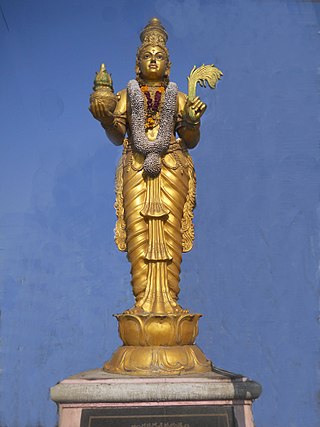
Telugu people, or Telugus, or Telugu vaaru, are the largest of the four major Dravidian ethnolinguistic groups in terms of population. Telugus are native to the Indian states of Andhra Pradesh, Telangana and the Yanam district of Puducherry. A significant number of Telugus also reside in the surrounding Indian states of Karnataka, Tamil Nadu, Maharashtra, Gujarat, West Bengal, Chhattisgarh, Kerala, and Odisha, as well in the union territory of Andaman and Nicobar Islands. Telugus claim descent from the Andhras, from whom the Telugus inherit their ethnonym. Telugu is the fourth most spoken language in India and the 15th most spoken language in the world.
The historical Avanti Kingdom of ancient India is described in the Mahabharata epic. Avanti was divided into north and south by river Vetravati. Initially, Mahissati was the capital of Southern Avanti, and Ujjaini was of northern Avanti, but at the times of Mahavira and Buddha, Ujjaini was the capital of integrated Avanti. The country of Avanti roughly corresponded to modern Malwa, Nimar and adjoining parts of the Madhya Pradesh.

The Vidarbha Kingdom in the Sanskrit epic Mahabharata is among the many kingdoms ruled by Yadu kings . It was situated in the region still known as Vidarbha in what is now Maharashtra in the Deccan.
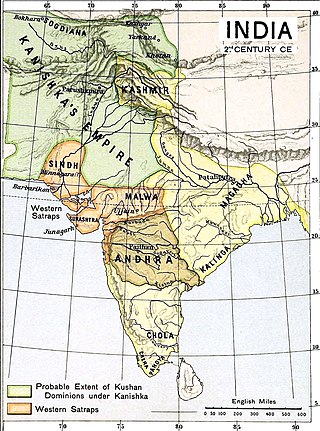
Andhra was a kingdom mentioned in the epics Ramayana & Mahabharata. It was a southern kingdom, currently identified as Indian state of Andhra Pradesh which got its name from.
Gomanta was a kingdom mentioned in the epic Mahabharata. It was an extension of the kingdom of Yadavas at Dwaraka. It is identified to be the Goa state of India, situated in the western coast. It was the southernmost extent of the region, occupied by the Yadava clans, finding explicit mention in Mahabharata.

The Abhira kingdom in the Mahabharata is either of two kingdoms near the Sarasvati river. They were dominated by the Abhiras, sometimes referred to as Surabhira also, combining both Sura and Abhira kingdoms. Modern day Abhira territory lies within Northern areas of Gujarat and Southern Rajasthan, India. King Sivadatta was probably the founder of the Abhira kingdom.

North Karnataka is a geographical region in Deccan plateau from 300 to 730 metres elevation that constitutes the region of the Karnataka state in India and the region consists of 13 districts. It is drained by the Krishna River and its tributaries the Bhima, Ghataprabha, Malaprabha, and Tungabhadra. North Karnataka lies within the Deccan thorn scrub forests ecoregion, which extends north into eastern Maharashtra.
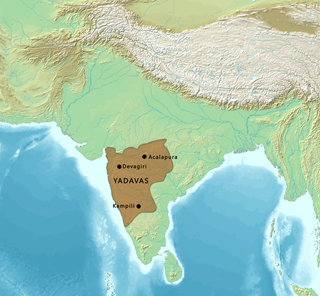
The Seuna, Sevuna, or Yadavas of Devagiri was a Medieval Indian dynasty, which at its peak ruled a kingdom stretching from the Narmada river in the north to the Tungabhadra river in the south, in the western part of the Deccan region. Its territory included present-day Maharashtra, North Karnataka and parts of Madhya Pradesh, from its capital at Devagiri.
The Origin of the Rashtrakuta dynasty has been a controversial topic and has been debated over the past decades by historians. The differing opinions mostly revolve around issues such as the home of the earliest ancestors of the medieval Rashtrakutas, a possible southern migration during the early part of the first millennium and the relationship between the several Rashtrakuta dynasties that ruled small kingdoms in northern and central India and the Deccan in the 6th century - 7th century. Further, the relationship of these medieval Rashtrakutas to the most important and famous dynasty, the Rashtrakutas of Manyakheta of the 8th century - 10th century time period has also been debated. Also contested is whether the Rashtrakutas of Manyakheta were related by ancestry to the early Kannada, Maratha, Reddi communities of the Deccan or other ethnic groups of northern India.

The recorded history of Andhra Pradesh, one of the 28 states of 21st-century India, begins in the Vedic period. It is mentioned in Sanskrit epics such as the Aitareya Brahmana. Its sixth-century BCE incarnation Assaka lay between the Godavari and Krishna Rivers, one of sixteen mahajanapadas. The Satavahanas succeeded them, built Amaravati, and reached a zenith under Gautamiputra Satakarni.
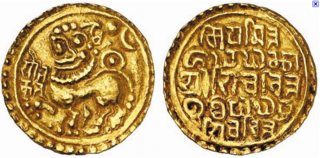
The Kadambas of Goa were a dynasty during the Late Classical period on the Indian subcontinent, who ruled Goa from the 10th to the 14th century CE. They took over the territories of the Shilaharas and ruled them at first from Chandor, later making Gopakapattana their capital.

The Paramara dynasty was an Indian dynasty that ruled Malwa and surrounding areas in west-central India between 9th and 14th centuries. They belonged to the Parmara clan of the Rajputs.
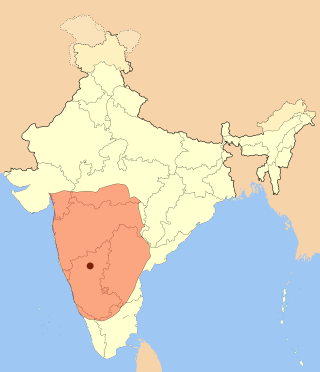
The Chalukya dynasty was a Classical Indian dynasty that ruled large parts of southern and central India between the 6th and the 12th centuries. During this period, they ruled as three related yet individual dynasties. The earliest dynasty, known as the "Badami Chalukyas", ruled from Vatapi from the middle of the 6th century. The Badami Chalukyas began to assert their independence at the decline of the Kadamba kingdom of Banavasi and rapidly rose to prominence during the reign of Pulakeshin II. After the death of Pulakeshin II, the Eastern Chalukyas became an independent kingdom in the eastern Deccan. They ruled from Vengi until about the 11th century. In the western Deccan, the rise of the Rashtrakutas in the middle of the 8th century eclipsed the Chalukyas of Badami before being revived by their descendants, the Western Chalukyas, in the late 10th century. These Western Chalukyas ruled from Kalyani until the end of the 12th century.

The Kuntala country is an ancient Indian political region that probably included the western Deccan and some parts of central and south Karnataka. Kuntala coins are available since estimated 600-450 BCE. Kuntala formed one of the divisions of Southern India as late as 10th-12th centuries A.D.. Each developed its own culture and administration. The Talagunda inscriptions mention Balligavi and nearby regions as parts of Kuntala. Inscriptions in Kubaturu near Anavatti mention Kubaturu as the Kuntalanagara. Kuntala is revered as one of the three great countries of Chalukya period in inscriptions.
Revatidvipa or Govapuri was a province under the Chalukya dynasty, encompassing parts of modern-day Goa and Maharashtra, India. Revatidvipa was an important trading port of the dynasties that controlled it, including the Chalukyas. It was conquered by the Rashtrakuta ruler Krishna I in 753 AD.
References
- ↑ Mahajan, Malati (1989). A cultural history of Maharashtra and Goa: from place name inscriptions. Sundeep Prakashan. p. 79.
- 1 2 Shastri, Ajay Mitra (1992). The Age of the Vākāṭakas. Harman Publishing House. p. 69. ISBN 9788185151519 . Retrieved 31 March 2016.
- ↑ India Today International. Living Media India Limited. 1999. Retrieved 31 March 2016.
- ↑ Vaidya, Chintāmana Vināyaka (1921). History of Mediæval Hindu India: (being a History of India from 600 to 1200 A.D.) ... Oriental Book Supplying Agency. p. 259. Retrieved 31 March 2016.
- ↑ Anthropological Survey of India (1995). The Scheduled Castes. Oxford University Press. p. xxiv. ISBN 9788171547609 . Retrieved 31 March 2016.
- ↑ Debroy, Bibek (2015). The Mahabharata. Penguin UK. pp. Chapter 870(10). ISBN 9788184756814 . Retrieved 18 June 2016.
- ↑ Souza, Teotonio R. de, ed. (1990). Goa through the ages. New Delhi: Concept Pub. Co. p. 4. ISBN 9788170222590 . Retrieved 18 June 2016.
- ↑ Chapekar, Laxman Narayan (1966). Thakurs of the Sahyadri. University of Bombay; distributors: P.C. Manaktala. p. 3. Retrieved 18 June 2016.
- Kisari Mohan Ganguli, The Mahabharata of Krishna-Dwaipayana Vyasa Translated into English Prose, 1883-1896.
